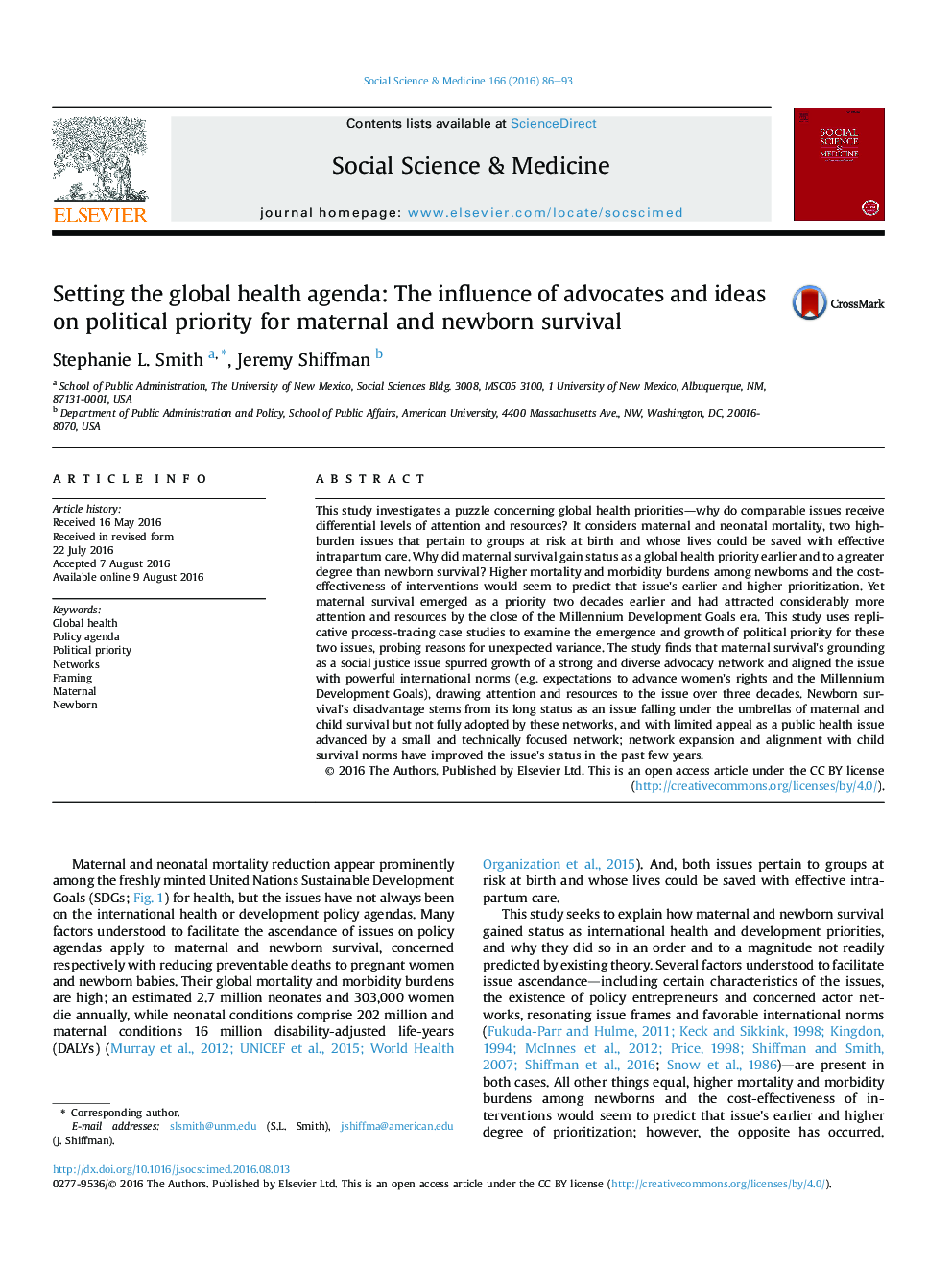| Article ID | Journal | Published Year | Pages | File Type |
|---|---|---|---|---|
| 7329215 | Social Science & Medicine | 2016 | 8 Pages |
Abstract
This study investigates a puzzle concerning global health priorities-why do comparable issues receive differential levels of attention and resources? It considers maternal and neonatal mortality, two high-burden issues that pertain to groups at risk at birth and whose lives could be saved with effective intrapartum care. Why did maternal survival gain status as a global health priority earlier and to a greater degree than newborn survival? Higher mortality and morbidity burdens among newborns and the cost-effectiveness of interventions would seem to predict that issue's earlier and higher prioritization. Yet maternal survival emerged as a priority two decades earlier and had attracted considerably more attention and resources by the close of the Millennium Development Goals era. This study uses replicative process-tracing case studies to examine the emergence and growth of political priority for these two issues, probing reasons for unexpected variance. The study finds that maternal survival's grounding as a social justice issue spurred growth of a strong and diverse advocacy network and aligned the issue with powerful international norms (e.g. expectations to advance women's rights and the Millennium Development Goals), drawing attention and resources to the issue over three decades. Newborn survival's disadvantage stems from its long status as an issue falling under the umbrellas of maternal and child survival but not fully adopted by these networks, and with limited appeal as a public health issue advanced by a small and technically focused network; network expansion and alignment with child survival norms have improved the issue's status in the past few years.
Related Topics
Health Sciences
Medicine and Dentistry
Public Health and Health Policy
Authors
Stephanie L. Smith, Jeremy Shiffman,
